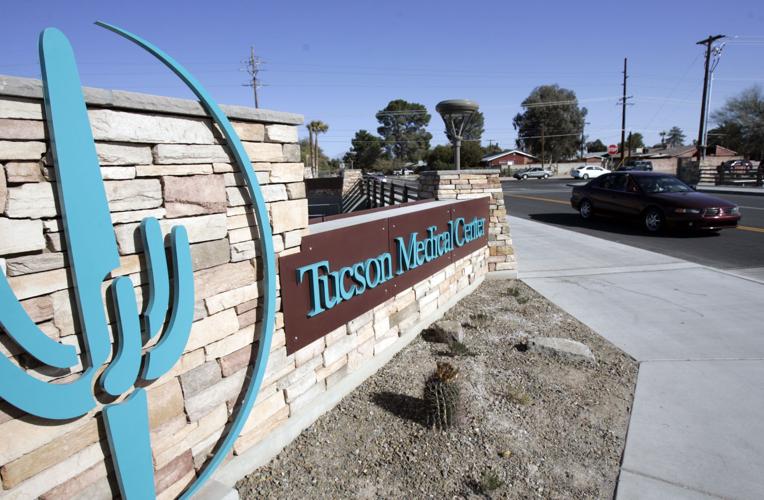Twelve Arizona hospitals were among 773 in the nation that earned a grade of “A” on the twice-per-year Leapfrog patient safety scores, but there were no Tucson hospitals among them.
The recently released scores are meant to measure how hospitals keep patients safe from preventable harm and medical mistakes, such as central-line-associated bloodstream infections, accidental punctures and lacerations, and catheter-associated urinary tract infections.
Sixty percent of the country’s 2,530 hospitals that were issued a score in the survey were awarded a grade of “B” or higher.
The fall 2015 update shows several positive trends for certain hospital-acquired conditions and safety measures, but hospitals are performing worse on critical measures like foreign objects left in after surgery, The Leapfrog Group officials said in a news release. Overall, the results indicated performance on safe practices and process measures varied greatly.
The Leapfrog Group is a national nonprofit organization that says it is driving a movement for “giant leaps forward in the quality and safety of American health care.” It was founded by large employers and other purchasers of health care.
Many hospital officials say the grades should not be the only way people judge a hospital. Critics note the lag time between the data collection period and the score — all of the recent grades are based on 2014 data, and not everyone agrees with the scoring methodology.
“The Leapfrog report card is based largely on unvalidated responses to survey questions and measures derived from billing data that are both old and not able to be adequately adjusted for differences in patients’ underlying conditions,” said Nancy Foster, vice president of quality and patient safety policy for the American Hospital Association.
Tucson’s seven community hospitals that were ranked earned two Bs, four Cs and a D. Tucson Medical Center and Northwest Medical Center both earned a B, while Carondelet St. Mary’s Hospital rated the lowest in Tucson with a D. All the other local hospitals earned a C.
Tucson Medical Center and Northwest Medical Center were the only local hospitals to post an improvement over the last score, which was released in the spring. Both hospitals’ scores went from a C to a B.
Officials with Tucson Medical Center, which is Tucson’s largest hospital, said that while they were pleased with the jump from C to B in the Leapfrog rankings, they do not consider the Leapfrog report as the only metric the public should use to judge hospital safety.
Dr. Rick Anderson, TMC’s chief medical officer, says the best way for patients to choose a local hospital is to start by asking friends, family and neighbors about their experiences, and to also ask their primary-care physician about their preferred hospital.
“It shouldn’t just be because they are employed by that hospital — you should ask why,” he said. “It’s nice to then look at the scores to see whether it’s held up, that the hospital is truly committed to those quality metrics and safety indicators and they’re working hard to improve.”
He noted a prevalence of different hospital rankings and star systems, including HealthGrades and the U.S. Centers for Medicare & Medicaid Services’ (CMS) Hospital Compare.
“You could be a B in Leapfrog and a D in HealthGrades. I don’t think there’s any one hospital that excels in all of them,” he said.
Overall, Arizona was 17th in the U.S. for its percentage of A-rated hospitals — 27 percent. Maine ranked first. Nearly 70 percent of its hospitals scored an A.
The Hospital Safety Score includes 28 measures. The methodology has been peer-reviewed and published in the Journal of Patient Safety.
Publicly available data from the Centers for Medicare and Medicaid Services (CMS), a voluntary Leapfrog Hospital Survey, and secondary data sources are weighted and then combined to produce a single, composite score.
“Our Tucson hospitals have not traditionally participated in this survey, so the data may not be accurate,” said Dr. Andreas Theodorou, chief medical officer at Banner-University Medical Center Tucson. “In the future, we will participate in Leapfrog as part of Banner Health, so future results will more accurately reflect our Tucson facilities.”
The Employers Health Alliance of Arizona encourages hospitals statewide to participate in the Leapfrog survey because hospital safety scores are something companies look at when they consider whether to locate here, executive director Emily Coyle said.
Northwest Medical Center has been improving patient safety by focusing on certain areas, among them, decreasing patient falls, spokeswoman Kimberly Chimene said. Tucson Medical Center has also made changes, among them reducing catheter use, Anderson said.
“One of our key initiatives with the physician partners that we have through different arrangements is asking physicians — do we really need to put catheters in our patients after their hip surgery? And if we do, how fast can we get it out?” he said.
Evidence shows the longer the catheter is in, the more likely infection will occur.
Leapfrog works under the guidance of an expert panel that includes Dr. Arnold Milstein of Stanford University, Dr. Peter Pronovost of the Johns Hopkins School of Medicine and Sara Singer of Harvard University.





